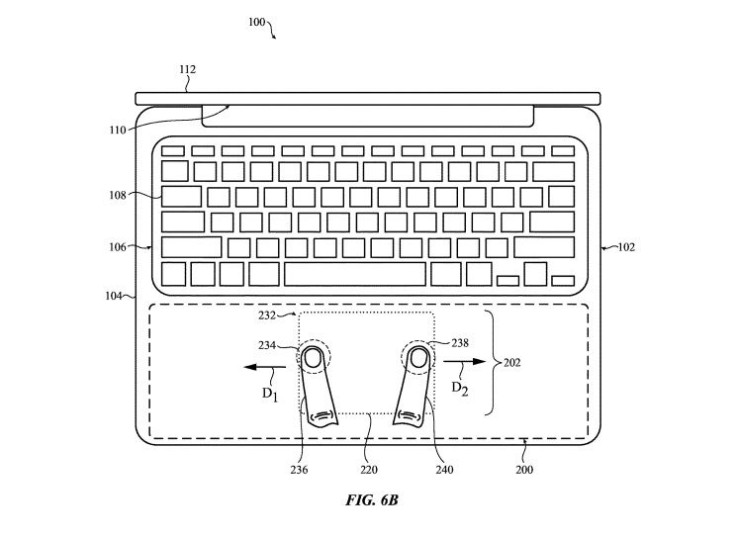Is Apple Redesigning MacBook’s Traditional Trackpad?
KEY POINTS
- A new patent reveals Apple's plans to redesign the MacBook trackpad
- Apple wants to create a dynamic, not static, trackpad
- The trackpad can be repositioned and resized at will
Apple's MacBooks, like any other laptop, have trackpads that serve as an input method. These trackpads are normally positioned at a fixed location near the keyboard and are usually sized large enough to allow for movement and gestures.
A new patent published by the U.S. Patent and Trademark Office, however, reveals that Apple plans to change all of that. The patent shows that Apple wants to create “dynamic” trackpads that could be repositioned as needed, and enlarged to accommodate larger gestures as required by certain tasks. It also explains why it plans to do this.
Why create dynamic trackpads?
Apple explained in the patent that while trackpads are useful for input, their static nature does not allow them to be repositioned as needed or desired. They will always be located in a fixed spot in the electronic device, and users will have to be the ones to adjust to them. This prevents users from placing them in a more optimal position according to their preferences.
Apple also explained that because trackpads come in a fixed size, users might find it “cumbersome” to use them to “perform actions that involve a large amount of scrolling or other trackpad functions.” These other functions include the use of gestures (such as pinches, two-finger swipes and so on). Having wider trackpads will allow for easier scrolling and use of gestures.
How Apple plans to create that
Cupertino's plans involve creating a trackpad that could be repositioned and enlarged at will to accommodate the user's specific needs. The patent describes future MacBooks as having a metal casing with a “dynamic input surface” comprised of “a group of indicators, and an adjustable input area bounded by an illuminated subset of the group of indicators.”

The dynamic trackpad will include a haptic feedback module, a touch detection module and a touch frequency module. It will be able to detect the user's gestures, then inform the user that it has received the gestures.
Apple's dynamic trackpad can be as wide as the entire space that serves as the palm rest beneath the keyboard. Users will be able to resize it to their liking. The MacBook will illuminate the space that will be used as a trackpad.
While the technology sounds exciting, it's currently unknown as to when will Apple be able to release a MacBook with such a trackpad.
© Copyright IBTimes 2024. All rights reserved.




















